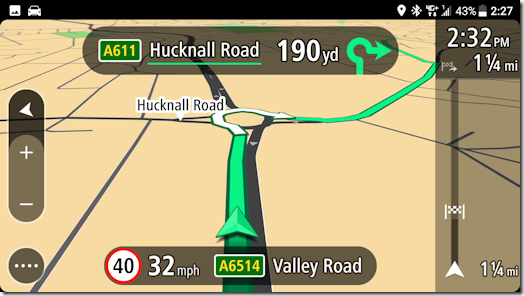 I’m proud of the fact that I have never had any points on my driving licence. That’s not to say that when I was a newly-qualified 17-year old I was some sort of angel, but as the years have gone by I have become… well, as I already said. Proud. And I always try to convey that to my learners, so that they can aim for the same record.
I’m proud of the fact that I have never had any points on my driving licence. That’s not to say that when I was a newly-qualified 17-year old I was some sort of angel, but as the years have gone by I have become… well, as I already said. Proud. And I always try to convey that to my learners, so that they can aim for the same record.
On lessons I am always aware of the locations of speed cameras and the pupil’s speed around them. This usually results in them asking what would happen if we were flashed on a lesson, and many are surprised to learn that it is the driver who gets the fine and the points. I then explain that if it ever happened in my car, although I wouldn’t legally be able to take the points, I would cover the fine (as long as they weren’t being completely stupid over something).
Many years ago, when I was still a naïve new instructor, I had a pupil who had her test booked but who wasn’t really ready for it. She was from overseas, and just wanted to take it. On the morning it was booked, among other issues, she was moving into and out of junctions at a snail’s pace and causing problems for traffic. Now, she had a serious attitude problem, and on one particular corner after I explained again that she needed to move away more briskly, she deliberately floored it and before I knew what was happening we were doing almost 50 on a residential road with oncoming vehicles. I used the dual controls and pulled her over. After some polite discussion, with both of us knowing full well she’d done it on purpose (but not actually saying it), I simply told her she was not going to test, but that I would cover the test fee. That was the precise moment when I stopped acting as a hire service for desperately bad drivers.
The point of that story is that if we had been caught speeding in that situation, or one like it, I certainly wouldn’t have covered the fine.
I go on to explain that if it could somehow be shown that I was forcing the pupil to break the limit, then I might face a separate charge of “aiding and abetting”, but that isn’t likely to happen in the first place, so it isn’t an issue we need to worry about. Having said that, a couple of years ago I took on a new pupil who had been learning for some time with a local (and very long-serving) instructor up this way, and she told me he had a stick in the trunk of the car that he used to reach over and push the driver’s foot on to the accelerator with if they were going too slow! Make of that what you will.
The next question they ask concerns any points they might get. Many of them are surprised to learn that you can get points on your provisional licence, though it naturally follows from that earlier thing I mentioned where the driver is always held accountable. You can get banned whilst still on a provisional licence (you can get banned even if you don’t have a licence at all). It is worth pointing out that there is technically no limit to the number of points you can get on your provisional. It’s just that when you reach 12, it has to go to court, but any ban is at the discretion of the court, and probably would involve being banned.
While you are still on a provisional licence, you will normally receive a ban if you accrue 12 or more “live” points within any 3-year period. The ban is usually for six months.
When you pass your test, there is a two year probationary period during which you’re only allowed a maximum of six points before receiving a ban.
If you have any points on your provisional, these will be carried over on to your full licence. Since you could have as many as 11 points on your provisional and not receive a ban, that doesn’t mean you’re automatically banned when you pass. You’re simply in sudden-death mode – where even a single point after that will result in a ban. Since you’re looking at a minimum of three points for speeding or traffic light jumping, having just three points carried over still leaves you in sudden-death mode until those carried-over points expire.
Any points on your licence are considered to be “live” for three years from the date of the offence (some serious offences can stay live for 10 years – those involving drink-driving or drugs being one example). After this, they are considered as “spent”, but they remain on your licence for a further year. When they’re spent, they aren’t included in any totting up if you were to get caught again. However, if you’re after a job which involves driving (and in a lot of cases, even if it doesn’t), having a licence which tells people the kind of person you have been may well prevent you from getting the job. So any points, whether live or spent, can be a serious problem.
And don’t forget that if you do something that warrants it, you could get banned immediately for a first offence, and it could be for longer than six months.
Remember that your provisional licence simply allows you to use the road, so it doesn’t matter if any points are acquired while you were riding a moped. I once had a pupil who had six points on his provisional. Both sets of three were due to speeding on his moped, and both were from the same speed camera. Even better, the camera was about 100 metres from his house along the Long Eaton high street in front of shops, schools, churches, etc. The reason it had happened (twice) was that he “didn’t know it was only 30mph on that road”. When he passed, he was in sudden-death mode for the next two years.
What happens if I pass when points are about to expire?
They get carried over and expire at the same time they would have done if you hadn’t passed. I can guess what you’re thinking, and there is no point whatsoever in delaying your test if you have live points about to expire. They’ll still expire, but will remain on your licence for a further year.
If you need a clean licence for some reason, there is nothing you can do about points until the fourth (or eleventh) year has passed.
While points were only shown on the now-obsolete paper part of your licence, there might have been some merit waiting until the end of the fourth (or eleventh) year before taking a test so that your new licence was clean, thus relieving you of the hassle of updating it all. But these days the checks are electronic, and if there are any points on your licence that are less than four (or eleven) years old, anyone who needs to check will automatically know.
If you commit an offence, you will get points that last for either three or ten years. They are kept on record for a further year after that. If you were guilty, there is nothing you can legally do to get them off, and no legal or honest way of preventing anyone who needs to know seeing them.
Why aren’t you taught this when you’re doing ADI training?
Well first of all, the people providing all the stupid wrong answers are ADI’s themselves – many of whom will be training other people to become ADIs. So there’d be a problem right from the start if they were teaching it. Come to think of it, it might be part of the problem right now if some of them are.
But the information doesn’t really come under ADI training per se, and is something that anyone who is training to become an instructor should find out for themselves. I mean, our training doesn’t cover the Highway Code in detail – it’s just assumed that someone who is training to become an ADI has read and understood it when they prepared for the Part 1 test.
I guess the biggest difference is that I get my information either from solicitors, or directly from DVLA (or DVSA if appropriate), and not from other ADIs on social media or web forums. If I get two different answers, I question further until I find the right one, and don’t just pick the one I like best.
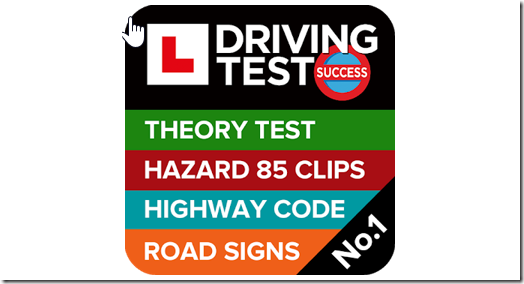 I recently saw an ADI claim that theory test apps are no good because they “only cover 5%” of the possible questions. It’s yet more complete bollocks from so-called “professionals”, and is only true – and even then, only partially – if you (or your pupil) is an idiot.
I recently saw an ADI claim that theory test apps are no good because they “only cover 5%” of the possible questions. It’s yet more complete bollocks from so-called “professionals”, and is only true – and even then, only partially – if you (or your pupil) is an idiot.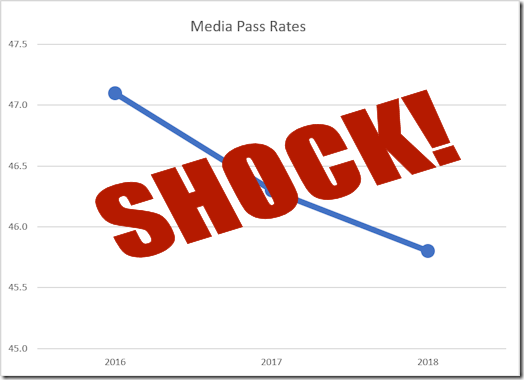
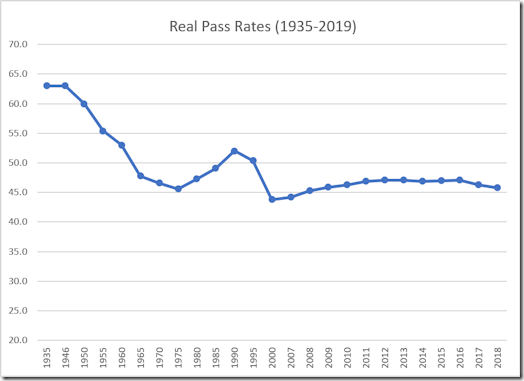
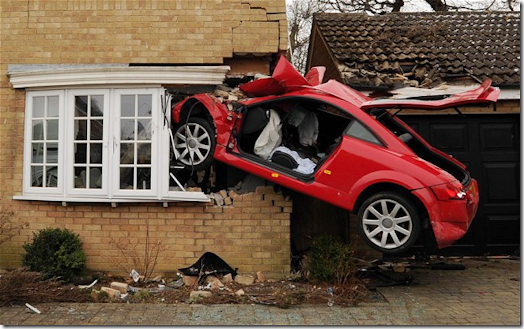 A DVSA alert came through yesterday informing us that they’re investigating the
A DVSA alert came through yesterday informing us that they’re investigating the 
 This often crops up with my pupils, especially when mum or dad is involved in their driving practice.
This often crops up with my pupils, especially when mum or dad is involved in their driving practice. I got an email recently from a company which supplies pupils. I don’t have any real problem with places like this (as long as they aren’t ripping people off), but one thing about it made me smile.
I got an email recently from a company which supplies pupils. I don’t have any real problem with places like this (as long as they aren’t ripping people off), but one thing about it made me smile. I’m proud of the fact that I have never had any points on my driving licence. That’s not to say that when I was a newly-qualified 17-year old I was some sort of angel, but as the years have gone by I have become… well, as I already said. Proud. And I always try to convey that to my learners, so that they can aim for the same record.
I’m proud of the fact that I have never had any points on my driving licence. That’s not to say that when I was a newly-qualified 17-year old I was some sort of angel, but as the years have gone by I have become… well, as I already said. Proud. And I always try to convey that to my learners, so that they can aim for the same record.